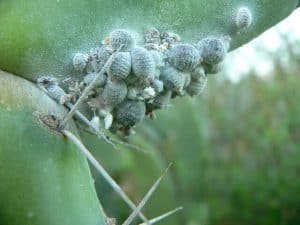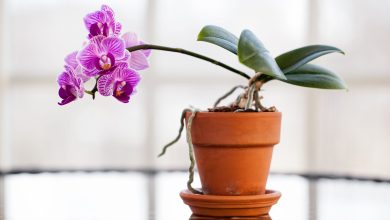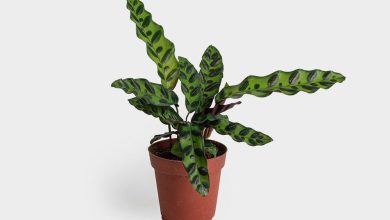Albizia Julibrissin: [Cultivation, Irrigation, Associations, Pests and Diseases]

Important points when planting Albizia julibrissin
 Where to sow? In full light. Sunlight without excess, but withstands intense cold well.
Where to sow? In full light. Sunlight without excess, but withstands intense cold well.- When? In spring.
- How do we prepare the land? Removed, removing weeds. With substrate such as humus and sand.
- How do we water? With drip.
- How often do we water? In summer, once every two weeks. The rest of the year spaced irrigation.
- Plagues and diseases? Cochineal, pear tree psylla, fusarium and soot.
 Deciduous tree of the Mimosoideae family, the albizia julibrissin has a wide and open crown of branches and inflorescences called «stormy».
Deciduous tree of the Mimosoideae family, the albizia julibrissin has a wide and open crown of branches and inflorescences called «stormy».
It belongs to the genus Angiosperms with flowers, fruits and seeds and as it ages the dark gray bark turns greenish with vertical stripes.
Originally from Southeast Asia, from eastern Iran to China and Korea, it is widely found throughout the Spanish geography; specimens of Albizia Julibrissin grow from Gerona to Cádiz.
There are more than 150 species and it can reach up to 12 meters in height and 8 meters in width, the albizia julibrissin does not live beyond 30 years. Its beautiful pink flowers have shapes of feathers and red pom poms.
Some common names that albizia julibrissin receives are Acacia of Constantinople, Albizia, Silk Tree, Parasol of China, Tree of Constantinople, Acacia of Persia, Acacia taperera.
When to plant an Albizia julibrissin tree?
The albizia julibrissin, is a plant that reproduces by seeds during the spring.
Some horticulturists and gardeners consider that the best period to sow the albizia julibrissin plant is during the months of March, April, May, September, October and November.
Where to do it?
 In the natural habitat, Albizia julibrissin tends to grow on dry plains, in sandy valleys, and uplands. Therefore, it requires a lot of sunlight, without excess.
In the natural habitat, Albizia julibrissin tends to grow on dry plains, in sandy valleys, and uplands. Therefore, it requires a lot of sunlight, without excess.
It supports intense cold well and has a fast growth, however, it likes sunny places. The albizia julibrissin is a plant of the rustic species. Tolerates intense frosts down to -15º C.
How to prepare the land?
They are plants that adapt to all types of soils, that is, they do not have edaphic requirements, but they like medium-type soils.
The albizia julibrissin can be planted in poor soils, but it would be advisable to make it a mixture with humus, sand and limestone, which are well drained.
Some gardeners prefer alkaline and low- moisture soils for Albizia julibrissin, limestone, poor in nutrients, although it also tolerates environments near the sea.
How do we water the Albizia julibrissin tree?
 For albizia julibrissin irrigation is important in the first two years. In consecutive years, watering can be reduced because the root apparatus can already get the moisture it needs.
For albizia julibrissin irrigation is important in the first two years. In consecutive years, watering can be reduced because the root apparatus can already get the moisture it needs.
It should be watered every two weeks in summer seasons, in later years the amount of watering is reduced to maintain the precise level of humidity, it should not have puddles of water.
To know how to water the albizia julibrissin, it is recommended to maintain uniform humidity, always water at dusk or first thing in the morning and place the amount of water without excess.
How do we plant an Albizia julibrissin tree step by step?
Multiplication by seeds
 It multiplies in spring, through seeds that, due to their impermeable covers, must be treated with hot water or sulfuric acid before sowing.
It multiplies in spring, through seeds that, due to their impermeable covers, must be treated with hot water or sulfuric acid before sowing.
It is important to bear in mind that the multiplication of Albizia julibrissin by seeds has the disadvantage that, due to genetic variability, there is no certainty of obtaining plants that are the same as the mother.
To plant an albizia julibrissin tree is very simple, you only need to have a good piece of land and the necessary time to take care of it, but the main thing is to select the seeds well.
Germinate the seeds since their cover is very hard and waterproof, for this it is recommended to place them in boiling water for 5 seconds and then leave them in natural water for 24 hours, so that the shell loosens.
For the composition of the substrate, a mixture must be made that contains humus, sand and limestone that favors the drainage of the plant. Sow the seeds once they germinate, directly in the garden since, being a bush-type species, it needs enough space for its development.
Place the crop in a place where it has good light and direct sunlight, although it can withstand the cold well during its adult stage. Water every 2 weeks, without flooding the plant. Fertilize the plant once it has its first flowering using organic fertilizer or a good liquid fertilizer.
pot cultivation
 If it is grown in pots, it is important to choose a large container, to avoid frequent transplants.
If it is grown in pots, it is important to choose a large container, to avoid frequent transplants.
Place a fertile, slightly acidic substrate with a little coarse sand and at the bottom pieces of terracotta that will prevent the drainage holes from becoming clogged and covered.
Every year remove the surface layer of the soil by at least 5 centimeters and replace it with new substrate, while the crop remains in the pot.
If the whole planting process of the albizia julibrissin was carried out correctly and the plant began its development, its flowers will appear from late spring and its fruits ripen in autumn.
What favorable associations does it have?
The association of crops of compatible plants produces benefits with respect to their cultivation separately, in addition to the use of light, water and/or nutrients.
Favorable associations of Albizia julibrissin with other species are not known. It is up to the horticulturists and specialists in the area to select the crops that could give them the best results.
What pests and diseases attack the Albizia julibrissin tree?
 The albizia julibrissin species is particularly subject to invasions by psyllids, an insect that bites leaves, pods and flowers in search of sap.
The albizia julibrissin species is particularly subject to invasions by psyllids, an insect that bites leaves, pods and flowers in search of sap.
The sticky droppings of psyllids are ripe for sooty mold, a fungus that is similar to soot.
Pests that attack albizia julibrissin include mealybugs, fusarium wilt, and pear psylla.
How long does Albizia julibrissin live?
The maximum life span reached by this species is 3 decades.
How long does it take for albizia julibrissin to grow?
It will reach its maximum size between 8 and 10 years after planting.
How long does it take to produce fruit?
An albizia julibrissin can take up to 4 years to develop its first flowers and, therefore, its fruits.
Can it be grown in a pot?
Yes. This species accepts planting both in a pot and in the garden.
How many times does albizia julibrissin produce fruit?
It produces its well-known legumes only once a year.
Should albizia julibrissin be pollinated to obtain fruit?
Yes. The pollination process of this species is carried out through the intervention of insects that help in the task of pollen libation and transfer.
How cold can Albizia julibrissin tolerate?
It is a species that does well in warm climates, but in winter it is able to tolerate down to -15º C.
How many albizias julibrissin can be planted per hectare?
As it is a large tree, it is recommended to have between 50 and 80 units per hectare. It all depends on the amount of pruning applied to it.
What type of fertilizer does Albizia julibrissin need?
The fertilization process of this species will respond to an annual fertilizer with an NPK product.
It is advisable to vary over the years, first using a higher level of nitrogen, the following year higher in potassium and phosphorus, and then one of equal values.
How much heat and/or drought can Albizia julibrissin tolerate?
It is a warm climate plant that could eventually tolerate temperate climates.
Droughts are not much of a problem for Albizia julibrissin as long as they are punctual and not extended over time.
Bibliography and references
- Encyclopedia My first knowledge about Plants, Snakes and Conservation. (1961). Spanish edition by Dr. Frank Thompson. Grolier Publisher Incorporated New York. Printed in Mexico.
digital database
- Ecured.com. Albizia. Reproduced from: https://www.ecured.cu/Albizia



![Photo of Almond Harvesting: [Harvest, Collection and Drying]](https://www.complete-gardening.com/wp-content/uploads/2022/08/almond-harvesting-harvest-collection-and-drying-390x220.jpg)
![Photo of Olive Tree Diseases: [Characteristics, Types, Detection and Treatment]](https://www.complete-gardening.com/wp-content/uploads/2021/06/Cuales-son-las-enfermedades-del-olivo-y-como-podemos-detectarlas-390x220.jpg)